Indian Society and Social Issues: September 2025 Current Affairs | Current Affairs & General Knowledge - CLAT PDF Download
Apatani Tribe in the News
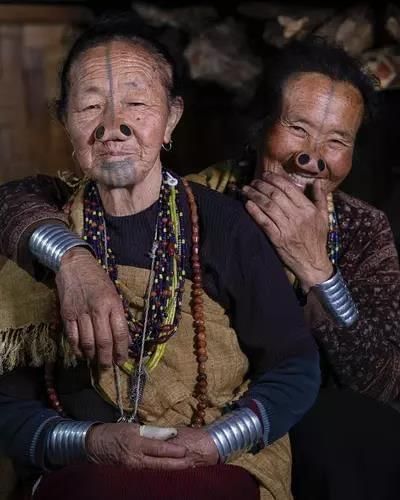
Why in News?
The Apatani Tribe, known for their unique facial tattoos and wooden nose plugs traditionally worn by women, is in the limelight as these practices, banned in the 1970s, are now only observed among the older generations. This has led to their significance in anthropological studies.
Key Takeaways
- The Apatani Tribe is primarily located in Ziro Valley, Arunachal Pradesh.
- They speak a dialect from the Tani linguistic group, part of the Tibeto-Burman family.
- The tribe follows a paganistic belief system, worshipping natural elements like the Sun and Moon.
- Global recognition for Ziro Valley includes its proposal as a UNESCO World Heritage Site.
Additional Details
- Cultural Identity: Women of the Apatani Tribe historically wore facial tattoos and nose plugs, which have become rare since the 1970s.
- Sustainable Farming Practices: The tribe engages in integrated rice-fish farming on terraced fields, cultivating rice varieties such as Mipya, Emoh, and Emeo, alongside fish species like Ngihi.
- Weaving Tradition: Women utilize a loin loom (Chichin) to create fabrics characterized by geometric and zig-zag designs, dyed using natural extracts.
- Bamboo Culture: Bamboo plays a crucial role in daily life and rituals, representing ecological harmony.
- Community Systems: The tribe maintains sustainable social forestry and village institutions to conserve their culture and environment.
The Apatani Tribe's rich cultural heritage and sustainable practices provide valuable insights into biodiversity and traditional ecological knowledge, reinforcing the importance of preserving such unique identities in the face of modernization.
How Much is Spent on Children’s Education in India
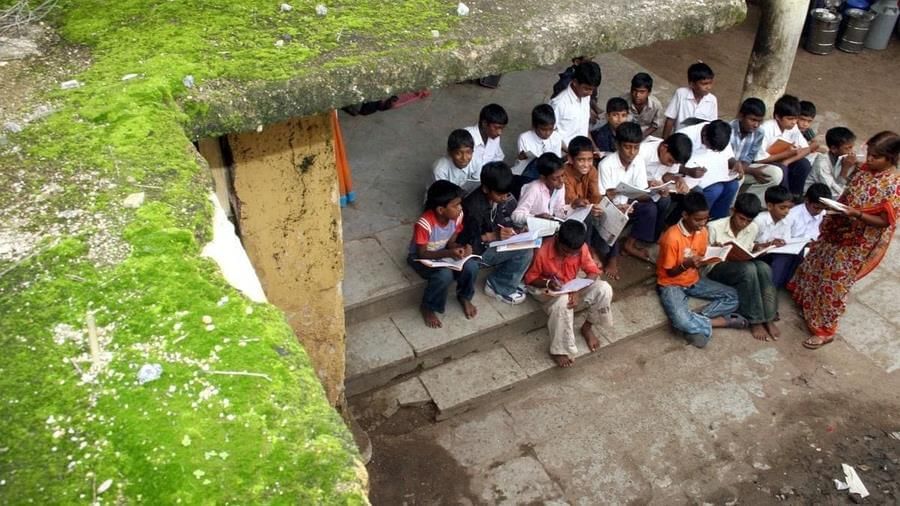
Why in News?
The issue of educational expenditure in India highlights the persistent gender inequities in education, revealing a disparity where families invest more in boys' education compared to girls, despite improvements in enrollment ratios.
Key Takeaways
- Households consistently spend more on boys across various educational stages.
- The recent National Sample Survey (NSS) revealed significant gaps in expenditure reflecting deep-rooted gender biases.
- Despite enrollment successes for girls, financial priorities remain skewed towards boys.
Additional Details
- Significance of the recent NSS report: The 2024 survey involved 52,085 households and 57,742 students, providing extensive data on education spending patterns.
- Urban vs. Rural Spending: In urban areas, families spend ₹2,791 less per girl than on boys, while in rural settings, boys receive 18% more investment in education.
- Tuition Classes: Although enrollment in coaching classes is similar (26% for girls vs. 27.8% for boys), expenditure on tuition for boys is 22% higher by higher secondary level.
- State-Level Variations: States like Delhi and Rajasthan show over a 10 percentage point gap in private school enrollment favoring boys, while Tamil Nadu and Kerala exhibit gender parity.
- Coaching Expenditure: Average spending on higher secondary tuition is ₹9,813 for boys compared to ₹1,550 for girls, indicating a significant disparity.
- Broader Implications: The lack of investment in girls’ education perpetuates gender inequality in the workforce and limits human capital development.
In conclusion, while the enrollment of girls in education has improved, the financial discrimination against them remains a significant barrier. To achieve true gender equality in education, families must prioritize investment in daughters' education equally with sons, supported by effective policies and awareness campaigns.
Langkhon Festival of Assam
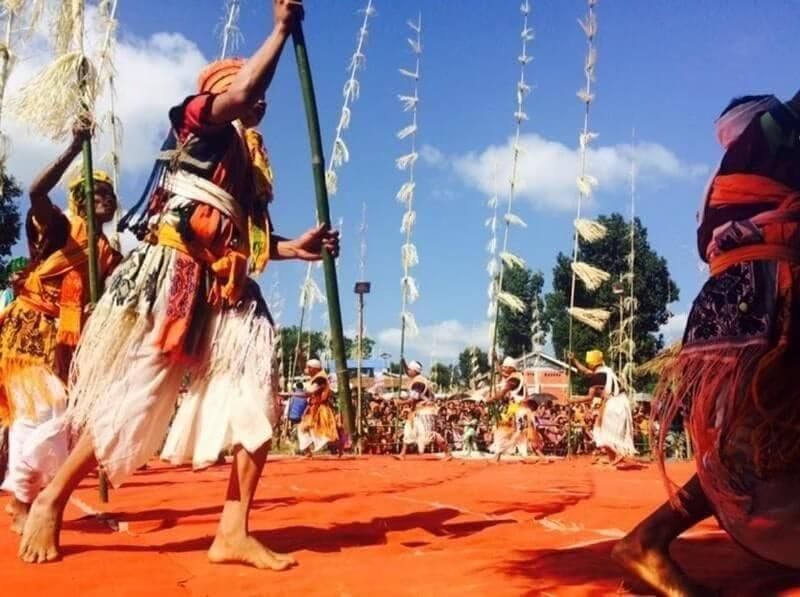
Why in News?
Recently, the Tiwa tribesmen celebrated the Langkhon festival in Umsowai village, located in the Karbi Anglong district of Assam. This festival marks an important event in the cultural calendar of the Tiwa community.
Key Takeaways
- The Langkhon festival is a pre-harvest thanksgiving celebration.
- It is traditionally celebrated in October to November, just before the Rabi crop season.
Additional Details
- Core Belief: The festival involves the worship of bamboo, which is seen as a symbol of prosperity and sustenance in Tiwa culture.
- Deities: Special prayers are offered to Ramsa Devota and other local gods, seeking protection for crops, welfare for families, and prosperity for the village.
- Ritual Practices: These include offerings, sacrifices, and prayers intended to drive away pestilence and evil forces, ensuring a good paddy harvest.
- Duration: The festival is celebrated for 2 to 4 days, encouraging active community participation.
- Traditional Dances: Cultural highlights include the Langkhon dance, Moinari Khanthi, and Yangli.
- Folk Songs: Integral songs such as Lo Ho La Hai (related to naming, weddings, and harvests) and Lali Hilali Lai (associated with weddings) are performed during the festival.
- Games & Sports: Local games like Plasele and Sam Kava are organized, which help strengthen community bonds.
The Langkhon festival not only serves as a vital cultural observance for the Tiwa people but also reinforces community ties and celebrates agricultural abundance.
Spending on Children’s Education in India: An Analysis
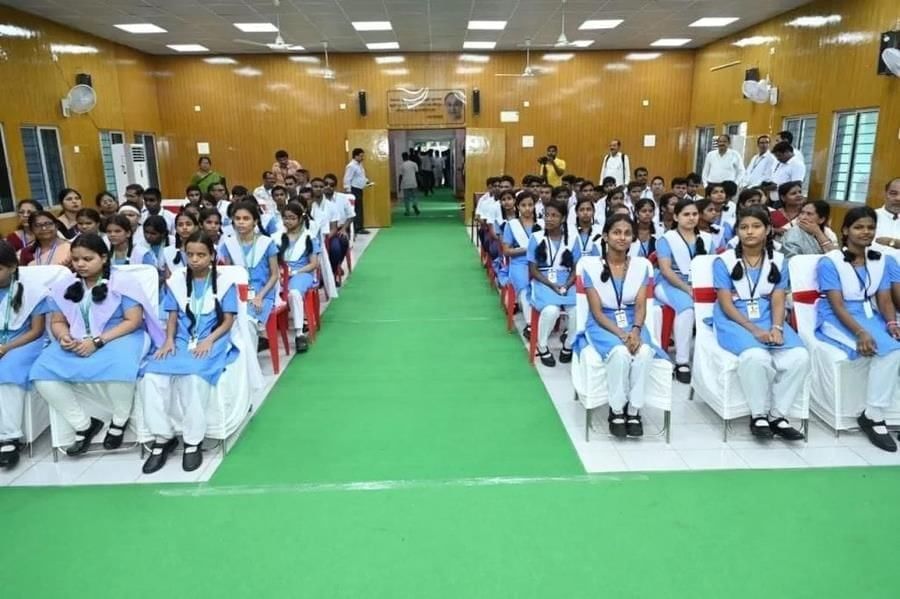
Why in News?
The recent drop in the World Economic Forum’s gender gap rankings has drawn attention to educational disparities in India. Despite improvements in girls’ school enrollment—where girls now make up 48% of the student population, with slightly higher participation in higher education than boys—data from the National Sample Survey reveals a continuing gender gap in educational spending. Families invest significantly less in daughters' education compared to sons, indicating unequal financial commitment despite better enrollment rates.
Key Takeaways
- Gender disparities in education expenditure persist across India.
- Families typically spend more on boys' education at all levels of schooling.
- State-level variations exist in both school enrollment and spending patterns.
Additional Details
- Education Expenditure Disparity: Across different stages of schooling, families allocate less financial resources to girls than to boys. In rural areas, spending is approximately ₹1,373 (18%) more on boys, while urban families spend about ₹2,791 less on girls. By the time students reach higher secondary school, urban families invest nearly 30% more in boys' education.
- Enrollment Patterns: A significant 58.4% of girls attend government schools, contrasting with only 34% of boys in private unaided schools—indicating a disparity in access to more expensive private education options.
- State-Level Differences: In states like Delhi, 65% of girls are enrolled in government schools compared to 54% of boys, while private school attendance reveals notable gaps. States such as Tamil Nadu and Kerala show more equitable enrollment ratios, whereas in Telangana and West Bengal, there is a stark contrast in spending on higher secondary education.
- Private Tuition Spending: In regions like Himachal Pradesh, families spend ₹9,813 on boys' higher secondary tuition compared to just ₹1,550 on girls, highlighting a significant gap in educational investment.
- Cultural Norms: Societal preferences often favor sons' education due to cultural beliefs that prioritize boys as future breadwinners, leading to lesser investment in daughters' schooling. Early marriage and household responsibilities contribute to higher dropout rates among girls.
- Government Subsidies: Various government initiatives provide financial aid for girls' education, which may result in lower reported expenditures for families investing in daughters.
The analysis reveals that while enrollment rates for girls have improved, significant gender disparities in educational spending and access persist. Addressing these inequalities is crucial for achieving true educational equity in India.
Citizens, Domicile, Migrants: The Concern of Provincial Citizenship
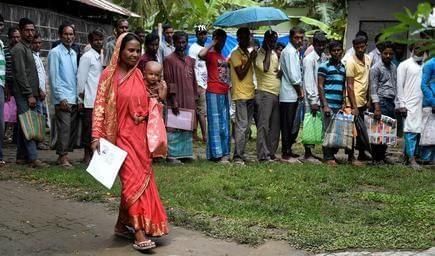
Why in News?
The discourse on provincial citizenship has become increasingly prominent as it diverges sharply from the constitutional promise of uniform Indian citizenship. This shift is particularly evident in the context of Jharkhand’s domicile politics, the domicile regulations in Jammu & Kashmir following the abrogation of Article 370, and the migration-related exclusions in Assam. These developments pose significant questions about the rights of citizens and the nature of Indian federalism.
Key Takeaways
- The concept of provincial citizenship emphasizes regional identity over national identity, complicating the framework of Indian citizenship.
- Recent domicile policies reveal how regional politics can exploit the sentiment of 'sons of the soil' to marginalize migrants.
- Provincial citizenship challenges the foundational principle of equality as articulated in Article 16(2) of the Indian Constitution.
Additional Details
- Provincial Citizenship: This concept is rooted in nativist politics and prioritizes belonging to a specific State rather than to India collectively. It has gained traction in regional electoral contexts by pitting 'locals' against 'outsiders.'
- Exclusion & Discrimination: Provincial citizenship often leads to the creation of second-class citizens among internal migrants, violating the spirit of Articles 15, 16(2), and 19 of the Constitution.
- Economic Inefficiency: Restrictions on labor mobility can harm industries and services in urban areas that rely on migrant labor.
- Judicial Burden: Conflicts arising from provincial citizenship and migrants' rights frequently necessitate judicial intervention, reflecting inadequacies in political resolution.
The rise of provincial citizenship signifies a critical challenge to the unity of Indian citizenship, driven not by external threats but by internal disputes over belonging and identity. The experiences in Jharkhand, Assam, and Jammu & Kashmir illustrate how these provincial claims could potentially fracture the inclusive vision of a unified India and weaken the principles of democratic federalism.
Adi Sanskriti Digital Learning Platform
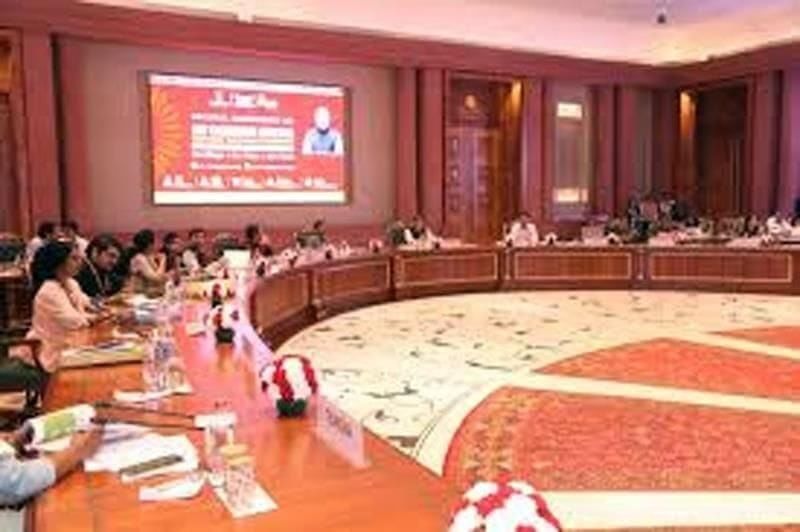
Why in News?
The Ministry of Tribal Affairs has recently unveiled the beta version of Adi Sanskriti, a groundbreaking digital learning platform aimed at promoting tribal culture and arts.
Key Takeaways
- The platform aims to preserve tribal art forms and create sustainable livelihoods.
- It strives to connect tribal communities with the global audience, eventually evolving into a Tribal Digital University.
- It is developed in collaboration with State Tribal Research Institutes (TRIs) to ensure authentic representation and participation.
Additional Details
- Objective: To establish a learning environment that nurtures tribal culture through certifications, research opportunities, and transformative learning pathways.
- Significance: Aims to be the world’s first digital university dedicated to tribal culture and traditional knowledge.
- Integration with TRIs: Contributions from TRIs across 14 states, including Andhra Pradesh, Assam, Bihar, Chhattisgarh, Gujarat, Kerala, Madhya Pradesh, Maharashtra, Odisha, Rajasthan, Tamil Nadu, Telangana, and Uttar Pradesh.
Key Components of Adi Sanskriti
- Adi Vishwavidyalaya: A Digital Tribal Art Academy offering 45 immersive courses on various tribal art forms, including dance, painting, crafts, music, and folklore.
- Adi Sampada: A socio-cultural repository housing over 5,000 curated documents on tribal arts, clothing, textiles, and livelihood practices.
- Adi Haat: An online marketplace linked with TRIFED, designed to support tribal artisans by providing a dedicated platform for sustainable livelihoods and direct consumer access.
This initiative represents a significant step towards recognizing and preserving the rich cultural heritage of tribal communities in India, while also providing them with opportunities for economic empowerment and cultural exchange.
Samagra Shiksha Abhiyan
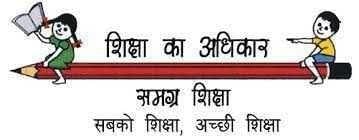
Why in News?
The Supreme Court has intervened in the financial dispute regarding the Samagra Shiksha Abhiyan, as Tamil Nadu faces reimbursements exceeding ₹3,000 crore to private schools for admissions of economically disadvantaged students. The Centre has declined to share these costs, prompting legal action.
Key Takeaways
- Samagra Shiksha Abhiyan was launched in 2018 to integrate various educational schemes into a single framework.
- The program aims to provide continuous education from pre-primary to Class XII, removing operational silos.
- The funding model involves a Centrally Sponsored Scheme with different sharing ratios for various states.
Additional Details
- Launch & Integration: Initiated in 2018 by the Ministry of Human Resource Development, it combines the Sarva Shiksha Abhiyan (SSA), Rashtriya Madhyamik Shiksha Abhiyan (RMSA), and Teacher Education (TE) into one comprehensive program.
- Funding Pattern: It operates as a Centrally Sponsored Scheme (CSS) with a funding split of 60:40 between the Centre and the States, and 90:10 for North Eastern or hilly states. The implementation is carried out through a single State Implementation Society (SIS).
- Coverage: The initiative encompasses approximately 1.16 million schools, serving over 156 million students and 5.7 million teachers in government and aided institutions.
- Upgraded Phase: Samagra Shiksha 2.0 (2021-2026) focuses on enhancing digital education, vocational training, foundational literacy and numeracy (FLN), and inclusivity.
- Holistic Development: The program integrates sports, physical education, self-defense, and soft skills under initiatives like Khelo India.
- Funding Scale: The allocation for the program is expected to exceed ₹41,000 crore by 2025, ensuring nationwide coverage until March 2026 under Samagra Shiksha 2.0.
In summary, the Samagra Shiksha Abhiyan represents a significant advancement in India's educational landscape, aiming for a seamless integration of various educational stages and promoting quality education for all.
The ‘Domestic Sphere’ in a New India
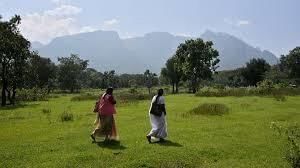
Why in News?
The discourse surrounding women’s empowerment in India has been shaped by various political, cultural, and economic factors. Recently, the narrative of nari shakti (women’s power) has gained traction, particularly under the current government. However, this rhetoric often masks the ongoing neglect of women's lives and labor, especially within the domestic sphere.
Key Takeaways
- The rhetoric of women’s empowerment contrasts sharply with regressive political stances on women's autonomy.
- Statistics reveal alarming rates of violence against women, yet the government treats these issues as private matters.
- Women bear a disproportionate burden of unpaid domestic labor compared to men.
- Government narratives often glamorize gender inequality rather than address it.
- Women’s unpaid labor significantly contributes to the economy but remains unrecognized in wage structures.
Additional Details
- Rhetoric versus Reality: Political leaders often invoke women’s empowerment while maintaining regressive views on women's roles, exemplified by statements urging women to focus solely on reproduction.
- Violence and Silence in the Home: From 2017 to 2022, an average of 7,000 women were killed yearly in dowry-related incidents. Despite high rates of intimate partner violence, only a small percentage of cases are reported to authorities.
- The Gendered Burden of Work: The Time Use Survey 2024 shows that while only 25% of women engage in paid work, 93% are involved in unpaid domestic tasks, highlighting a significant gender disparity in labor.
- State Narratives and the Glorification of Inequality: The government celebrates women's caregiving roles as cultural virtues, downplaying the systemic inequalities that underlie these responsibilities.
- Capitalism and the Invisible Subsidy: A 2023 study indicated that recognizing unpaid domestic work could increase India’s GDP by over 7%, illustrating how women’s labor subsidizes both state and capital.
To address these systemic injustices, interventions are necessary across cultural, social, and policy domains. This includes treating domestic violence as a structural issue, affirming women's rights to equal work and pay, providing universal childcare, and transforming cultural narratives about domestic responsibilities. Ultimately, achieving true nari shakti requires confronting the harsh realities that define women's lives in India.
Ranking Pitfalls: India Rankings (2025) based on NIRF
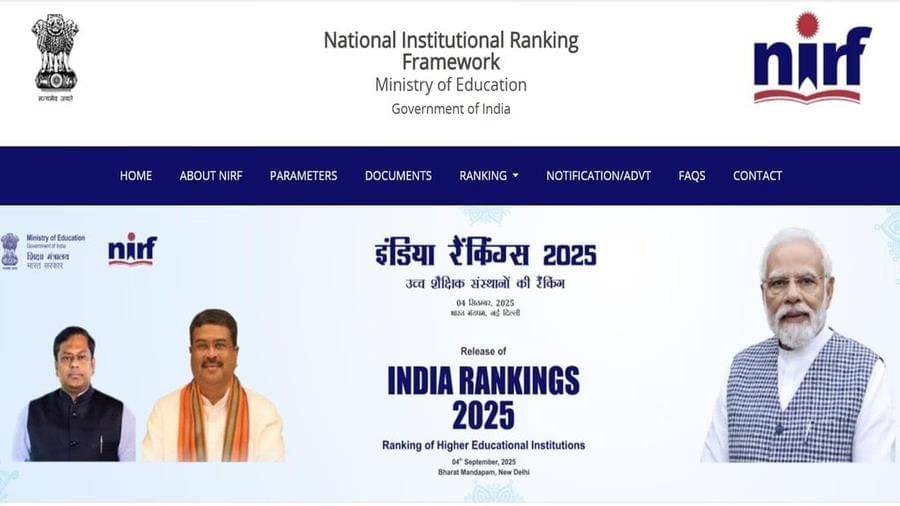
Why in News?
The India Rankings 2025 have highlighted significant issues within the National Institutional Ranking Framework (NIRF), which has been instrumental in assessing the performance of higher education institutions since its inception in 2016. Despite an increase in the number of participating institutions from 3,565 to 14,163, and an expansion of categories from four to seventeen, critical flaws in the ranking methodology remain. These include biased weightage towards subjective parameters, insufficient measures of inclusivity, and an excessive focus on institutional reputation, which may undermine the framework's potential to enhance equity and quality in higher education.
Key Takeaways
- The NIRF rankings are dominated by legacy public institutions, reflecting persistent inequalities in the Indian higher education sector.
- Methodological issues include reliance on subjective peer perception and incomplete inclusivity measurements, which neglect disadvantaged groups.
- Concerns exist regarding the adequacy of reservation policies for OBC, SC, and ST students in central institutions.
Additional Details
- Key Ranking Parameters:The NIRF employs five primary criteria:
- Teaching & resources (30%)
- Research (30%)
- Graduation outcomes (20%)
- Outreach & inclusivity (10%)
- Peer perception (10%)
- Peer Perception Flaw: The Education Minister has criticized the reliance on reputation-based rankings, which can be biased against institutions outside metropolitan areas.
- Self-Declared Data: The heavy dependence on self-reported data raises concerns about the potential for manipulation, with little accountability for false submissions.
- Bibliometric Dependence: This approach, while verifiable, fails to account for non-English and socially impactful research outputs.
Despite the NIRF creating significant awareness around institutional performance, it must address critical issues of inclusivity and fairness. If not, it risks becoming merely a branding exercise rather than a genuine tool for reform. For India's higher education system to progress effectively, rankings should actively promote equity, excellence, and social justice.
Conclusion
The NIRF has broadened its scope and increased awareness of institutional performance, but fundamental flaws must be addressed to prevent elitism and ensure equitable access to quality education. By evolving beyond rankings to serve as a policy tool, NIRF can enhance inclusivity, ensure accountability, and foster collaboration in India's higher education landscape.
|
98 videos|939 docs|33 tests
|
FAQs on Indian Society and Social Issues: September 2025 Current Affairs - Current Affairs & General Knowledge - CLAT
| 1. What are the key features of the Apatani Tribe's culture and traditions? |  |
| 2. How much is typically spent on children's education in India, and what factors influence this expenditure? |  |
| 3. What is the significance of the Langkhon Festival in Assam? |  |
| 4. What are the objectives of the Samagra Shiksha Abhiyan in India? |  |
| 5. How does the concept of "Provincial Citizenship" address the concerns of citizens, domicile, and migrants in India? |  |
















